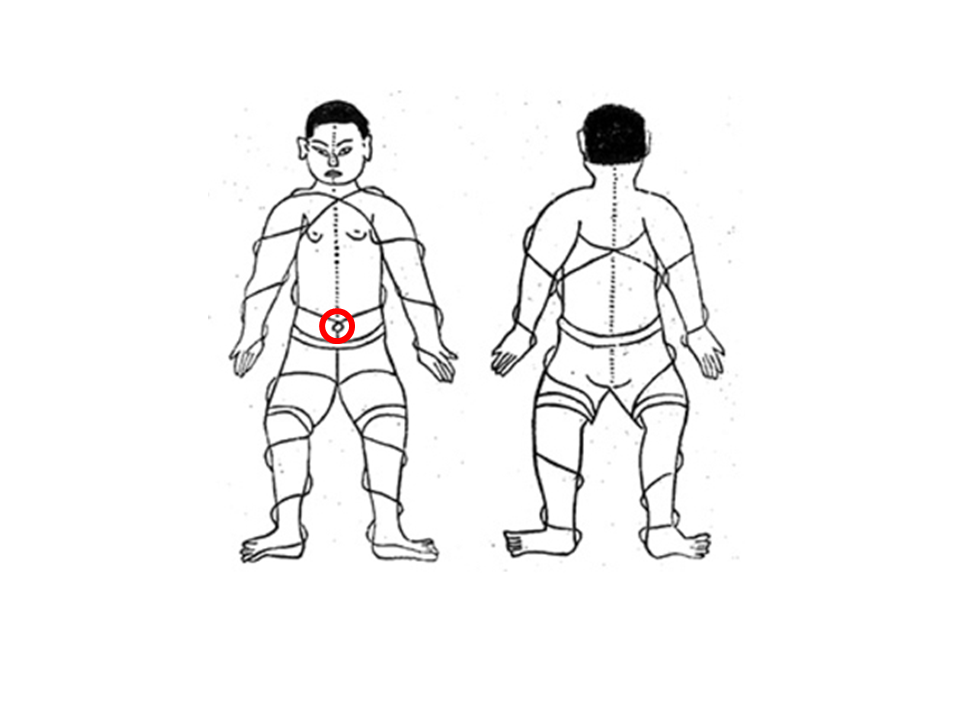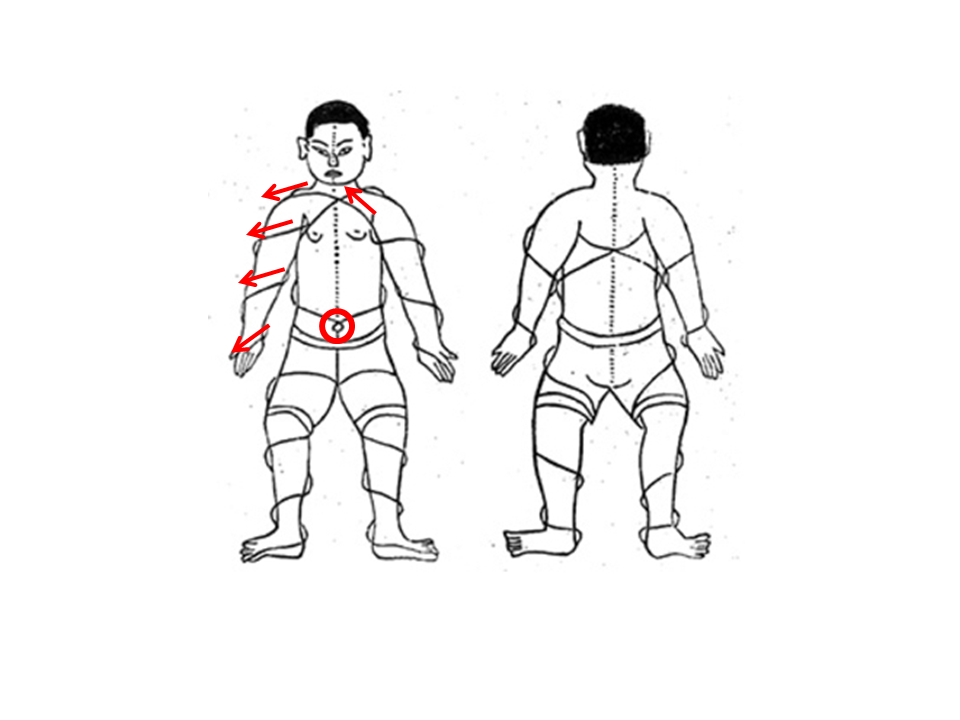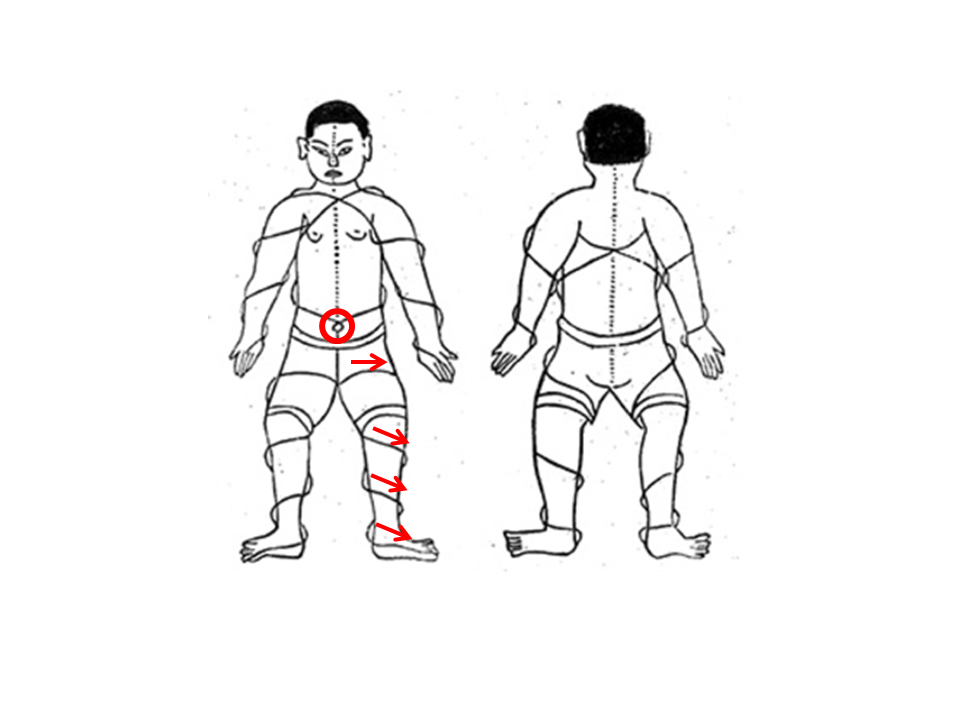This ‘mantra’ echoes during taijiquan lessons. It underlines the movement of upper extremities and it is intended to clarify the right sequence of muscles/joints involved during action.
For a beginner, the action seems starting from hand as:
- The hand performs a wide movement, capturing his/her attention
- He/She has no knowledge/awareness that hand movement is the final effect while the cause is elsewhere.
Action begins in the lower dantian, as depicted in the following drawing, representing taijiquan “silk-reeling power” or chansi-jin

Studying and practicing chansi-jin help us to understand that:
- Action starts from the center of the body and reaches extremities,
- A wide movement in the extremities is related to a small movement in the center of the body
As a consequence, we start to focus on our center/inside to produce an effect on the extremities/outside.
By following the spirals going from the dantian to the hands, we realize the meaning of our ‘mantra’:
- The movement starts from the dantian,
- Rises along the back,
- Passes from the shoulder
- Goes through the elbow
- Reaches the hand

In a similar way, by following the spirals going from the dantian to the feet, we can detect a muscle chain related the lower limbs:
- The movement starts from the dantian,
- Descends along the buttock,
- Passes from the hip,
- Goes through the knee,
- Reaches the foot

During my lessons, I usually alternate between ‘Shoulder, elbow, hand‘ catchphrase and ‘Hip, knee, foot‘ one.
In my opinion, muscle chain related to lower limbs is far more important than upper ones: body weight falls on the legs and an incorrect movement (ie, a knee shifting sideways) could bring troubles
